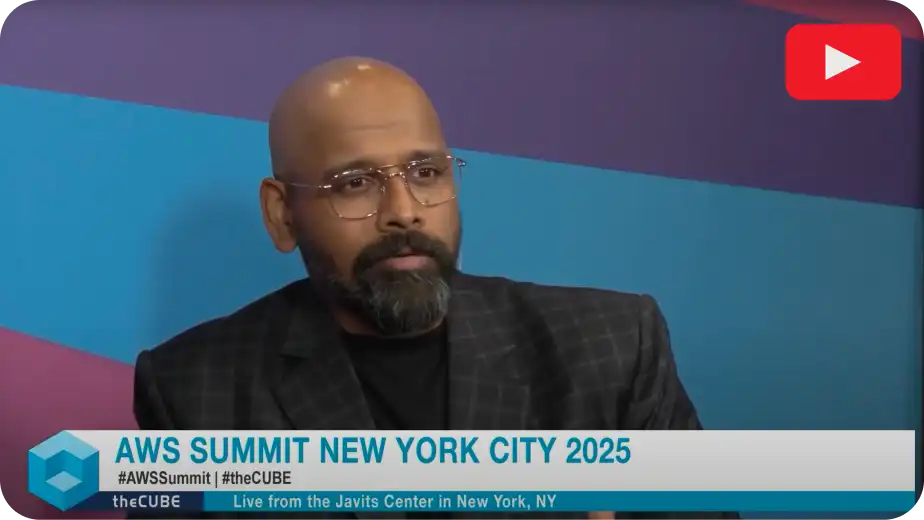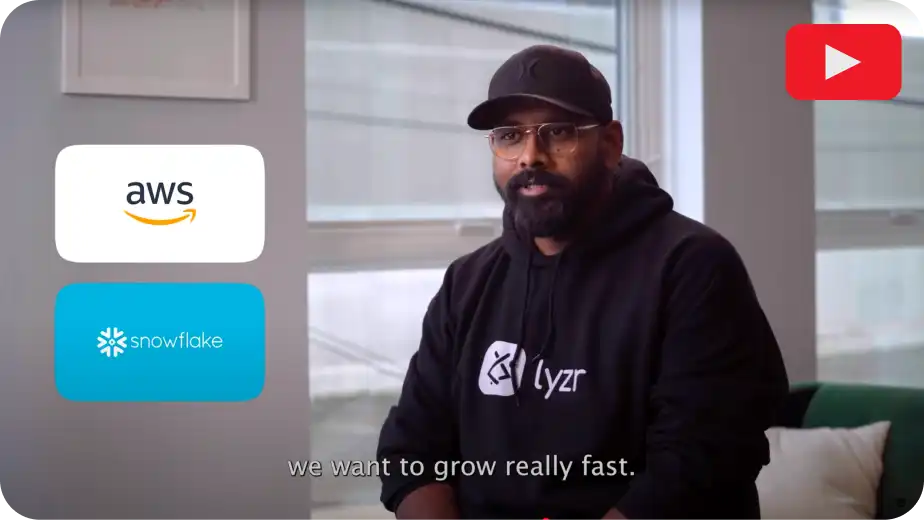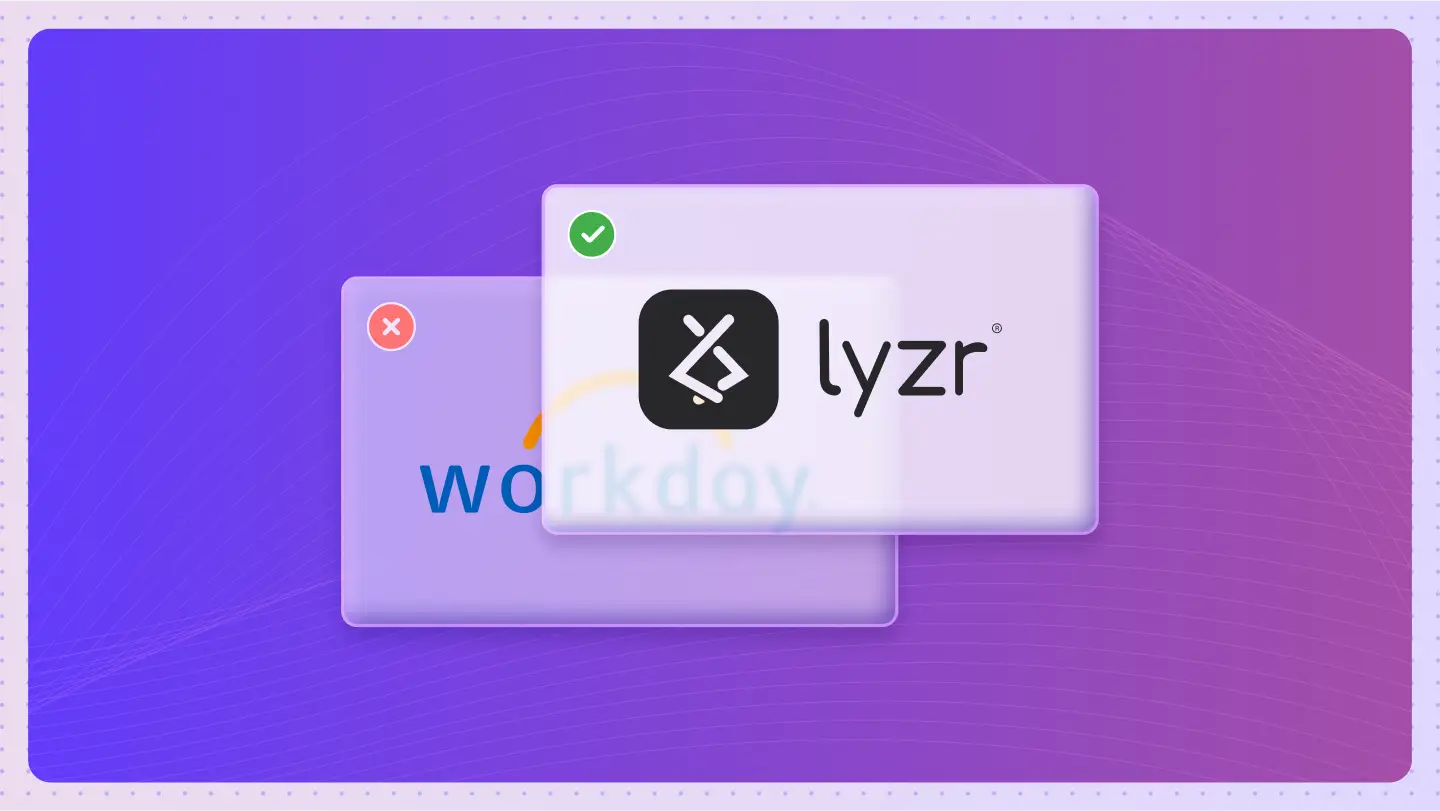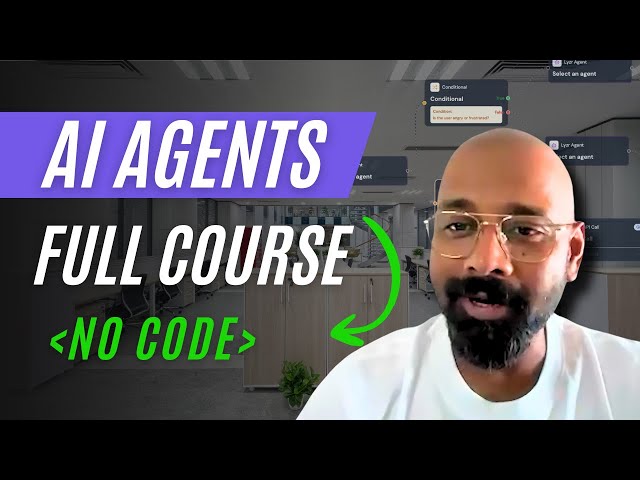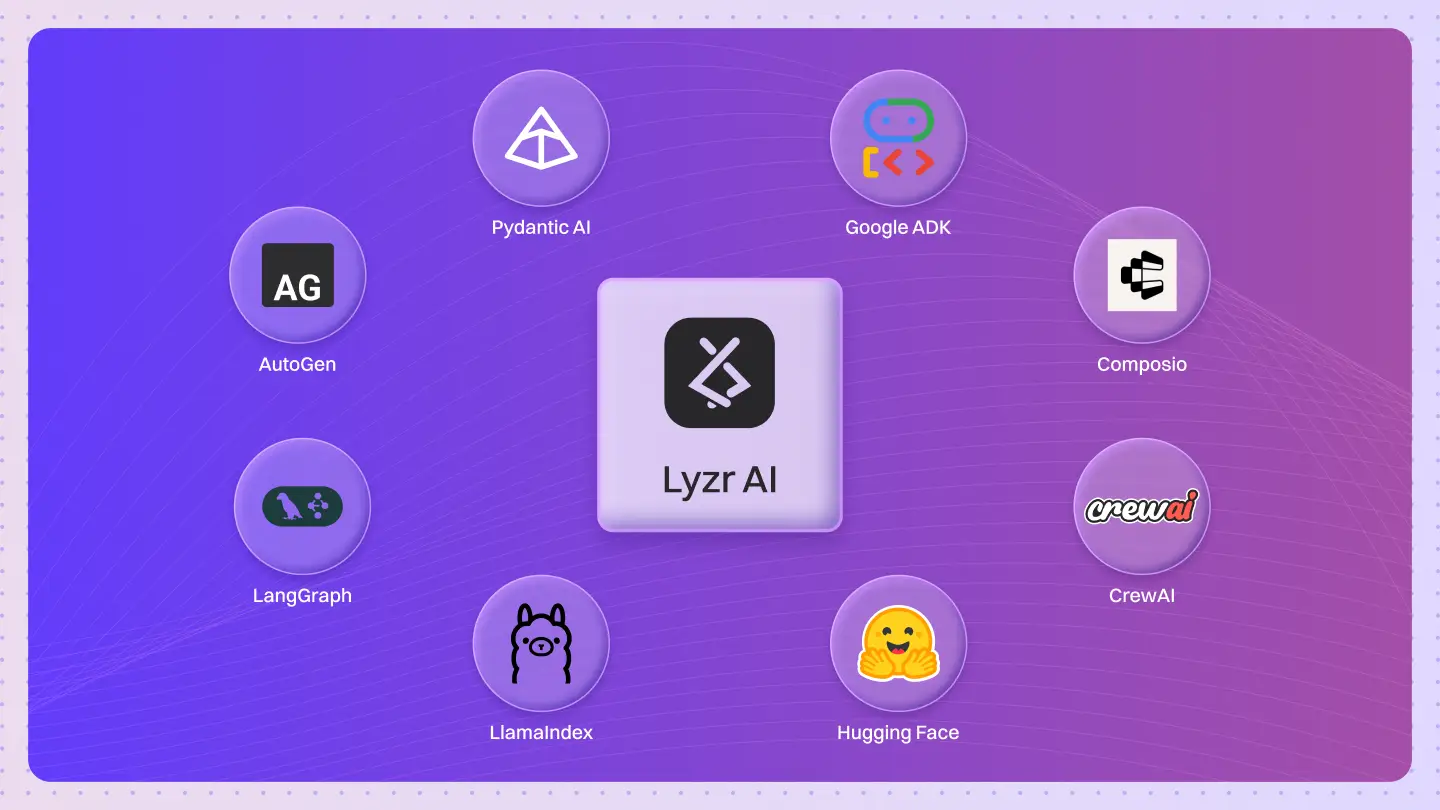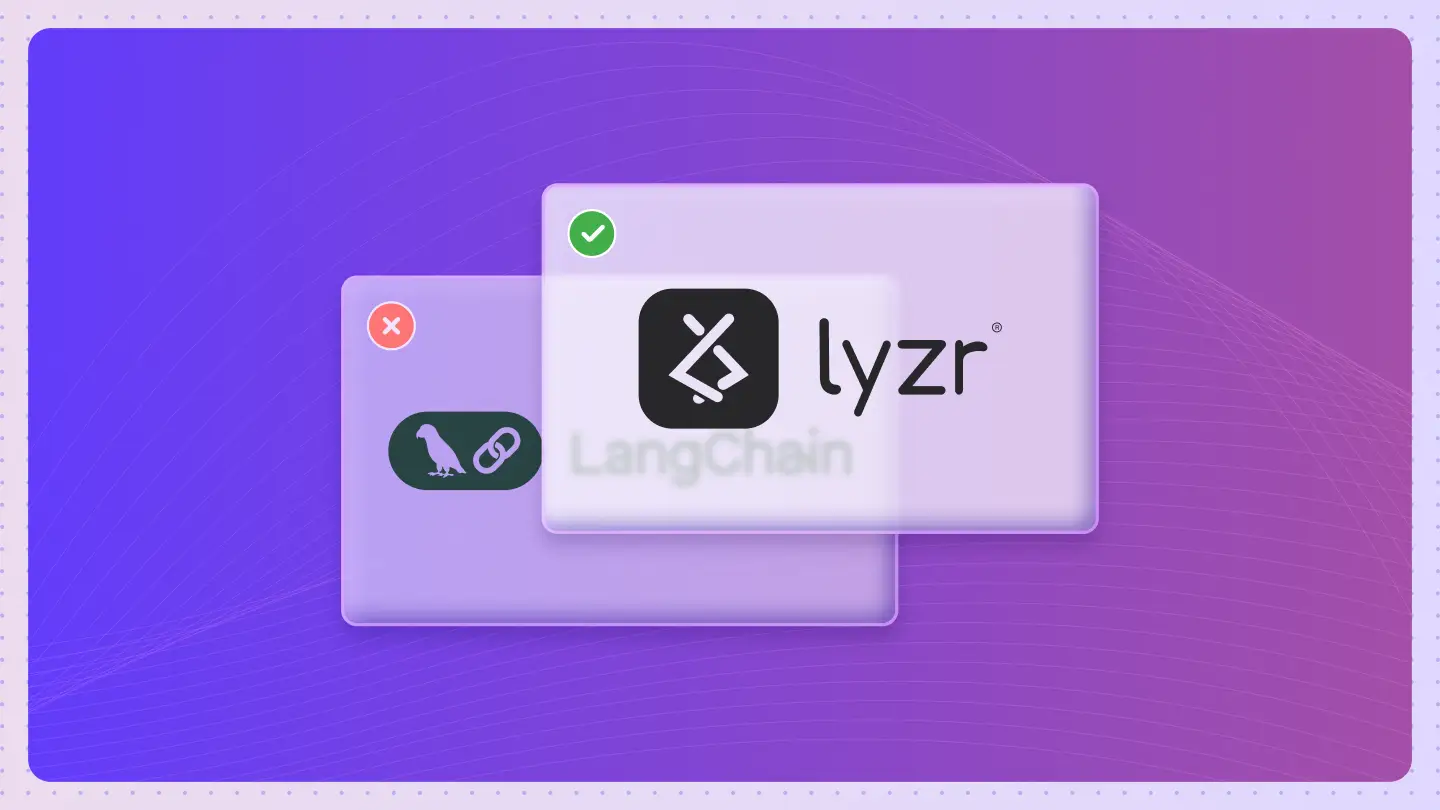Table of Contents
ToggleEveryone wants to Build & Deploy an AI Agent because they agree AI Agents are the future and
But the paradox is brutal:
- AI Agents can automate 50–80% of knowledge work across HR, finance, ops, and CX.
- But building a production-ready AI Agent normally takes months, multiple engineers, DevOps, five frameworks, and endless debugging.
This is the gap killing most enterprise AI initiatives.
Executives tell us the same worry every week:
“No-code agent builders are toys. They can’t run my workflows, connect to my systems, or replace engineering time.”
They’re right for most platforms.
A prompt wrapper is not an AI Agent.
Which is why this guide exists.
In this article, you’ll learn step-by-step how to build and deploy a real, production-grade AI Agent in under 20 minutes, using a hybrid No-Code + Code workflow that combines:
- the speed of no-code
- the power of enterprise-grade, code-first extensibility
This is the method CTOs and enterprise teams are shifting to in 2025.
The Traditional Trade-Off
Before platforms like Lyzr, you faced a high-stakes trade-off Forrester Wave on AI/ML Platforms
- The Developer-Led Code Path (Slow & Robust): Requires months to build Multi-Agent Orchestration using complex open-source frameworks, followed by intense DevOps to manage security, scaling, and monitoring.
- The No-Code Builder Path (Fast & Brittle): Provides speed but locks you into simple, linear workflows that cannot adapt to complex, multi-step business logic or integrate securely with proprietary systems. It’s perfect for a brochure website chatbot, but disastrous for mission-critical tasks like financial reconciliation or sensitive HR communication.
The reality is that 95% of the time-to-value for an AI Agent is not the initial idea, but the integration and deployment to production [Industry study on AI/ML project lifecycle]. You need to close this gap.
Traditionally, teams are forced to choose between power and speed and both options come with painful limitations.
| Approach | Pros | Cons |
|---|---|---|
| 1. Traditional Developer Path (Robust but Slow) | – Full control- Highly customizable- Can scale with enough engineering effort | – Requires LangChain, vector DBs, orchestrators, infra- Months of engineering work- High maintenance burden- Security & compliance built manually- Deployment + scaling headaches |
| 2. No-Code Path (Fast but Brittle) | – Quick to start- Simple visual builders- Low entry barrier | – Linear workflows only- No dynamic reasoning- No multi-agent orchestration- Limited integrations- Not enterprise-ready- Breaks easily under complex logic |
Result:
95% of AI projects die between POC and production because deployment is the bottleneck.
Why AI Agent Builders Matter (and What Most Get Wrong)
Most “agent builders” are just workflow builders with pretty UIs.
A real AI Agent must be:
- Adaptive (not linear)
- Tool-using
- Model-agnostic
- Capable of delegating to sub-agents
- Auditable
- Deployable as an API
This is where platforms like Lyzr stand out:
they provide a complete Adaptive Intelligence architecture, not another if-else workflow editor.
An Enterprise AI Agent Builder like Lyzr is not merely a GUI for an LLM; it is a complete, opinionated architecture for Adaptive Intelligence.
The Flaw of Simple Workflows
The old way was built on linear workflows a fixed sequence of steps. An Agent, by contrast, is a dynamic entity with the ability to reason, plan, use tools, and self-correct. This is the fundamental difference that matters to your bottom line:
- A Workflow always follows steps A – B – C.
- A Lyzr Agent is given a goal (G) and decides the optimal path: (Tool 1? Data Check? Delegate to Agent X?) – Result.
This multi-agent capability, where specialized agents (like a ‘Data Analyst Agent’ and a ‘Sales Agent’) work together under a ‘Manager Agent‘, is essential for tackling real-world problems. This is the new architecture of automation.
Steps: The Lyzr No-Code + Code Process
Lyzr allows your teams from HR to engineering to collaborate on one platform, leveraging the speed of no-code for core logic and the power of the SDK for deep integration.
1: Define the Purpose and Role (No-Code)
You start in the Lyzr Agent Studio to define your agent’s persona and goal.
- Role: Define who the agent is (e.g., “Senior Financial Analyst,” “Compliance Officer”).
- Goal: Define the desired business outcome (e.g., “Identify all non-compliant transactions in the ledger for Q3”).
- Core Configuration: Select the preferred LLM (Lyzr is model-agnostic, supporting all major providers) and set guardrails for responsible AI [Internal Link: Lyzr’s Responsible AI Trusted by Enterprises].
2: Connect Tools and Data (No-Code & Code)
This is the turning point for enterprise relevance. Tools give your agent the ability to act on your business systems, not just talk about them.
- No-Code Integration: Use Lyzr’s pre-built connectors [Internal Link: Lyzr Integrations page] for common systems like Salesforce, SAP, and various SQL databases. This instantly gives your agent powerful, permissioned access to your internal data and systems.
- The Code Path (For Custom Logic): If you need an agent to execute a highly specialized, proprietary task (e.g., a custom data validation API), your developer uses the Lyzr SDK to wrap that Python function into a simple, discoverable ‘Tool.’ This Tool is then immediately available to the no-code Studio users. This is how you fuse the two streams.
3: Orchestrate and Evaluate (No-Code)
In the Agent Studio, you visually design the multi-agent system.
- Orchestration: Drag and drop specialized agents (e.g., a Research Agent for external data and a Compliance Agent for internal policies) and define the communication protocol between them, enabling true Multi-Agent Orchestration Tutorial.
- Testing: Use the integrated evaluation module to test the agent against real-world, complex scenarios. Lyzr provides a clear Chain of Thought (CoT) visualization, so you can audit the reasoning a must-have for any CTO.
Lyzr Demo: From Prompt to Production-Ready
Let’s walk through a micro-example, transforming a complex HR task into an autonomous agent in minutes.
Micro-Example: The Onboarding Documentation Agent
The Pain: A newly hired employee needs answers about the specific company health plan, which is documented across four different, dense PDF files and an internal FAQ portal. A human HR manager takes 15 minutes to find and synthesize the answer.
The Lyzr Solution (Under 20 Minutes):
- Creation (2 minutes): Use the Lyzr Agent Studio. Create a Candidate Communication Agent . Give it the persona: “You are the friendly, expert Onboarding Assistant.”
- Data Ingestion (5 minutes): Upload the four PDF documents and point the agent to the internal FAQ portal.(internal knowledge base creation) Lyzr’s RAG pipelines automatically index, chunk, and embed this data, making it instantaneously accessible.
- Tooling (5 minutes): The agent needs to act. We assign it a ‘Schedule Meeting Tool’ (using a pre-built connector) and a ‘Search Internal Docs Tool’.
- Testing (8 minutes): Test with a complex query: “I’m on the family plan, and I need to know the co-pay for a specialist visit in Delhi, and if that information isn’t available, please schedule a 10-minute call with my HR representative, Priya.”
- The Agent reasons: Search Internal Docs Too–Finds co-pay information –Answers directly. (Time saved: 14 minutes).
- If the information was unavailable, the agent would use the Schedule Meeting Tool and prompt the user to book a slot with Priya. The Agent is Adaptive, not linear.
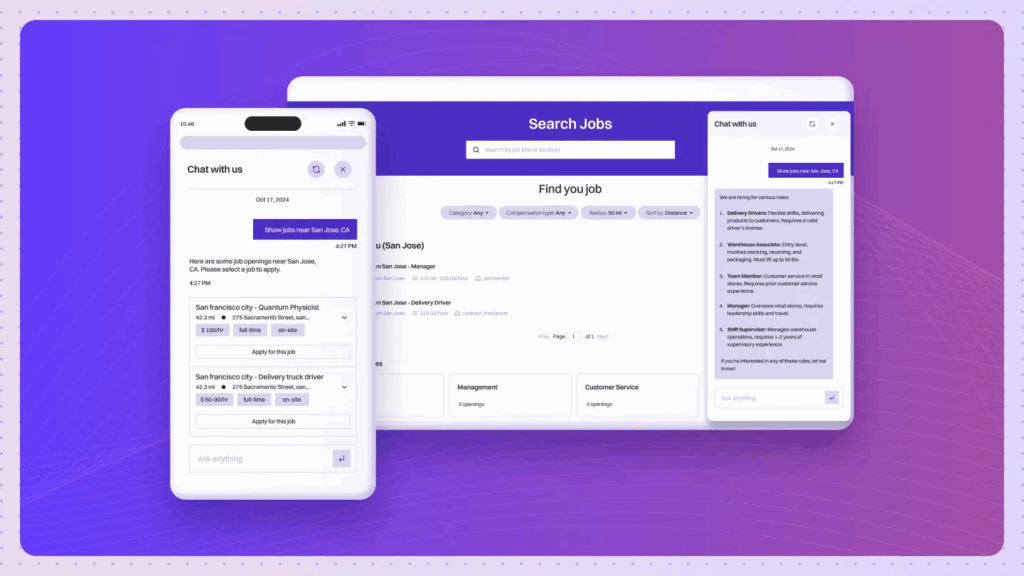
This is the speed-to-value proposition. The ability to build & deploy an AI Agent in under 20 minutes (No-Code + Code) comes from bypassing the boilerplate and focusing solely on the intelligence layer.
Deployment: The Enterprise Finish Line
A production-ready agent requires more than just smart code; it requires enterprise-grade deployment infrastructure. This is where Lyzr shifts from a builder to an MLOps platform.
1. One-Click API Endpoint
Every agent you create in the Lyzr Agent Studio or SDK is instantly packaged and deployable as a secure, scalable REST API Endpoint [: How to Deploy Your AI Agent in Minutes with Lyzr Agent Studio].
- This endpoint is ready for integration into your internal apps, a SaaS product, or a public-facing service.
- Lyzr manages the auto-scaling, load balancing, and failover automatically.
2. Security and Compliance Baked In
For the CTO, speed means nothing without security. Lyzr is built to meet the most stringent requirements:
- Deployment Flexibility: Lyzr supports on-premise or private cloud deployments [ Deploy secure enterprise AI agents, fast – Lyzr AI]. This is non-negotiable for highly regulated sectors (Finance, Healthcare), ensuring your data remains within your sovereign environment.
- Responsible AI Guardrails: Features like PII redaction, bias detection, and compliance safeguards (SOC 2, GDPR, HIPAA) are built into the core platform, not bolted on [Internal Link: Lyzr’s Responsible AI Trusted by Enterprises].

Micro-Examples: The Power of AI Agent Teams
The real value of Lyzr lies in its ability to deploy agents for complex, high-ROI tasks.
| Sector | Agent Team Goal | Lyzr Multi-Agent Solution |
|---|---|---|
| HR | Automate Onboarding & Compliance | Onboarding Agent (Manages welcome → delegates compliance checks to → Compliance Agent → logs to → ATS Agent.) |
| Finance | Identify Fraudulent Transactions | Transaction Agent (Flags high-risk entries → passes to → Rule-Engine Agent (checks historical patterns) → alerts → Auditor Agent.) |
| SaaS/CMO | Automate Content Pipeline | Research Agent (Finds trending topics) → SEO Agent (Optimizes keywords/title) → Drafting Agent (Writes post) → Publishing Agent (Posts to CMS). |
This delegation model means a small team can now manage automation projects that previously required an entire department.
The Destination: Manage Time, Not Complexity
If you are a CTO, CMO, or founder, your job is no longer to manage complexity; it is to manage time. The core insight is that the only AI Agent that creates value is a deployed AI Agent.
Lyzr AI is the logical platform because it unifies the speed you need with the security and power your enterprise demands. It is the system that transitions your team from debating AI theory to deploying AI results. It is the definitive answer to How to Build & Deploy an AI Agent in Under 20 Minutes (No-Code + Code)—a system designed to turn your innovative ideas into production reality, now.
It’s time to stop constructing a skyscraper with hand tools. Start building with the modular, precision-engineered platform designed for the future of work.
Your next logical step is to book a 20-minute live demo with us They will show you how to build your first agent live, for your specific business case
FAQs (Frequently Asked Questions)
1. Is Lyzr truly “no-code” or “low-code”?
Lyzr is a unified platform. The Agent Studio is a truly No-Code AI Agent Platform for 90% of the logic and tool configuration. The Lyzr SDK offers a clean, developer-friendly “low-code” path for building highly specific, proprietary tools and integrations, ensuring you get speed without sacrificing deep customization
2. Can I use my existing proprietary LLMs or fine-tuned models on Lyzr?
Yes. Lyzr is a multi-model platform. You can leverage all major commercial models (like OpenAI, Anthropic, or Google) and integrate your own custom or fine-tuned models. Lyzr can even orchestrate Multi-Agent Orchestration Tutorial by routing specific sub-tasks to the best-suited model for the job
3. How does Lyzr handle data security and compliance (e.g., GDPR, HIPAA)?
Lyzr offers flexible deployment, including private cloud and on-prem deployments, which is critical for compliance and data privacy. Your data remains in your secure environment, and Lyzr agents are designed with native guardrails and auditing features
4. What is the difference between a “Workflow” on other platforms and a Lyzr “Adaptive Agent”?
A workflow is a fixed, linear path (A then B then C). An Adaptive Agent is a dynamic decision-maker. It can determine the best next step, choose from an array of tools, delegate to other specialized agents, and even loop back to refine its reasoning, making it ideal for non-deterministic, complex business tasks.
5. How quickly can I go from a basic idea to a fully deployed API endpoint?
The Lyzr Studio and SDK are designed to allow a Proof-of-Concept Agent to be built and deployed as an API endpoint in under 20 minutes, which is why we’ve focused on How to Build & Deploy an AI Agent in Under 20 Minutes (No-Code + Code). For a production-ready Enterprise AI Agent Builder integrated with legacy systems, the process is dramatically reduced from months to weeks
Book A Demo: Click Here
Join our Slack: Click Here
Link to our GitHub: Click Here



